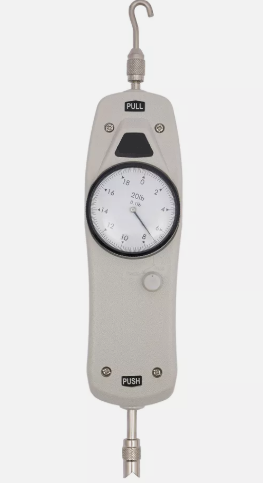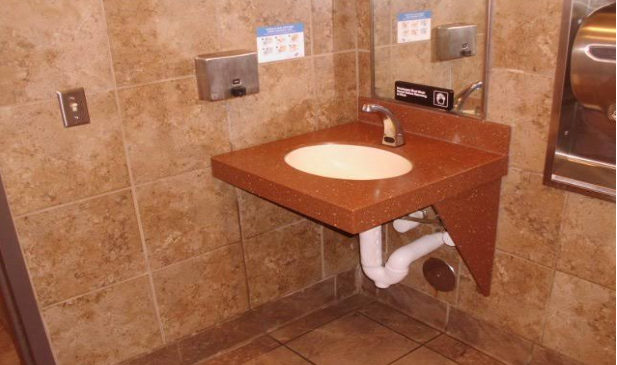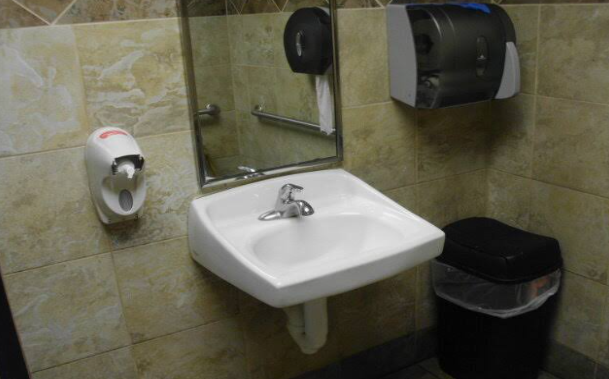
When considering the safety and accessibility of all users in a restroom, sink clearance plays a crucial role. The amount of space around a sink directly influences how a restroom functions and how people can safely use it, especially people with disabilities.
Let’s look at how proper sink clearance can impact restroom safety and make the restroom more accessible for everyone.

Sink clearance refers to the amount of space around and beneath the sink that allows people to approach and use it comfortably. Adequate clearance is important in public restrooms and ADA-compliant facilities because it ensures that wheelchair users and those using mobility aids can find their way around the sink without any obstacles. The clearance needs to account for both legroom beneath the sink and space in front and on the sides to allow people to approach it from different angles.
When sink clearance is limited, it creates chances for accidents, especially for people who rely on mobility aids. Without enough space beneath the sink, wheelchair users may struggle to position themselves properly, causing them to twist or lean awkwardly. This could lead to falls or strained muscles, posing safety risks in an area that’s already prone to accidents.
Also, sink clearance affects those who may not use a wheelchair but still need extra space for proper balance such as elderly people. Inadequate clearance can force these people to reach or bend over at uncomfortable angles, increasing the chances of slips or falls.
Safety isn’t only about physical movement; it’s also about promoting an environment where people feel safe and comfortable. Restrooms without clearance can become crowded around the sink area, especially during busy times. This congestion can cause people to wash their hands in a hurry, leading to decreased hygiene and even tension in the restroom. Proper clearance around the sink helps to maintain a smooth flow of traffic, allowing people to wash their hands without feeling rushed or overwhelmed. This improves overall hygiene and provides a safer environment for everyone using the restroom.

ADA sink clearance is about more than just meeting guidelines or creating a certain aesthetic. It’s an important aspect of restroom safety that impacts accessibility, hygiene and the comfort of users. By ensuring that sinks are designed with enough space around and beneath them, you can create restrooms that are safer and more welcoming to everyone, regardless of physical ability. Thoughtful restroom design doesn’t just meet the ADA standards; it helps people feel safe, comfortable and valued. Investing in proper sink clearance is a small but significant step toward creating accessible spaces that truly cater to the needs of everyone.



Measuring door pressure is acting in compliance with building regulations, like the Americans with Disabilities Act (ADA). It’s an important step in ensuring accessibility, safety

When talking about building safety, the first things that come to mind are fire alarms, emergency exits and security systems. Meanwhile, the one tool that
When considering the safety and accessibility of all users in a restroom, sink clearance plays a crucial role. The amount of space around a sink directly influences how a restroom functions and how people can safely use it, especially people with disabilities.
Let’s look at how proper sink clearance can impact restroom safety and make the restroom more accessible for everyone.

Sink clearance refers to the amount of space around and beneath the sink that allows people to approach and use it comfortably. Adequate clearance is important in public restrooms and ADA-compliant facilities because it ensures that wheelchair users and those using mobility aids can find their way around the sink without any obstacles. The clearance needs to account for both legroom beneath the sink and space in front and on the sides to allow people to approach it from different angles.
When sink clearance is limited, it creates chances for accidents, especially for people who rely on mobility aids. Without enough space beneath the sink, wheelchair users may struggle to position themselves properly, causing them to twist or lean awkwardly. This could lead to falls or strained muscles, posing safety risks in an area that’s already prone to accidents.
Also, sink clearance affects those who may not use a wheelchair but still need extra space for proper balance such as elderly people. Inadequate clearance can force these people to reach or bend over at uncomfortable angles, increasing the chances of slips or falls.
Safety isn’t only about physical movement; it’s also about promoting an environment where people feel safe and comfortable. Restrooms without clearance can become crowded around the sink area, especially during busy times. This congestion can cause people to wash their hands in a hurry, leading to decreased hygiene and even tension in the restroom. Proper clearance around the sink helps to maintain a smooth flow of traffic, allowing people to wash their hands without feeling rushed or overwhelmed. This improves overall hygiene and provides a safer environment for everyone using the restroom.

ADA sink clearance is about more than just meeting guidelines or creating a certain aesthetic. It’s an important aspect of restroom safety that impacts accessibility, hygiene and the comfort of users. By ensuring that sinks are designed with enough space around and beneath them, you can create restrooms that are safer and more welcoming to everyone, regardless of physical ability. Thoughtful restroom design doesn’t just meet the ADA standards; it helps people feel safe, comfortable and valued. Investing in proper sink clearance is a small but significant step toward creating accessible spaces that truly cater to the needs of everyone.